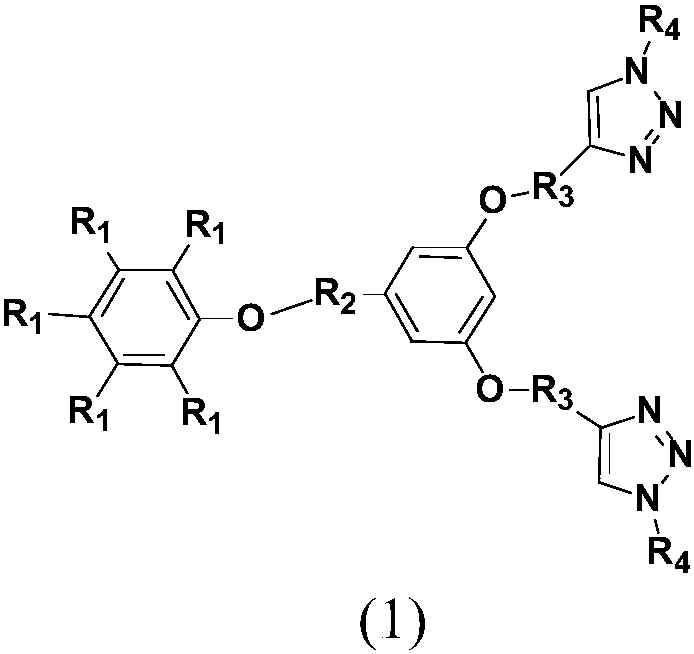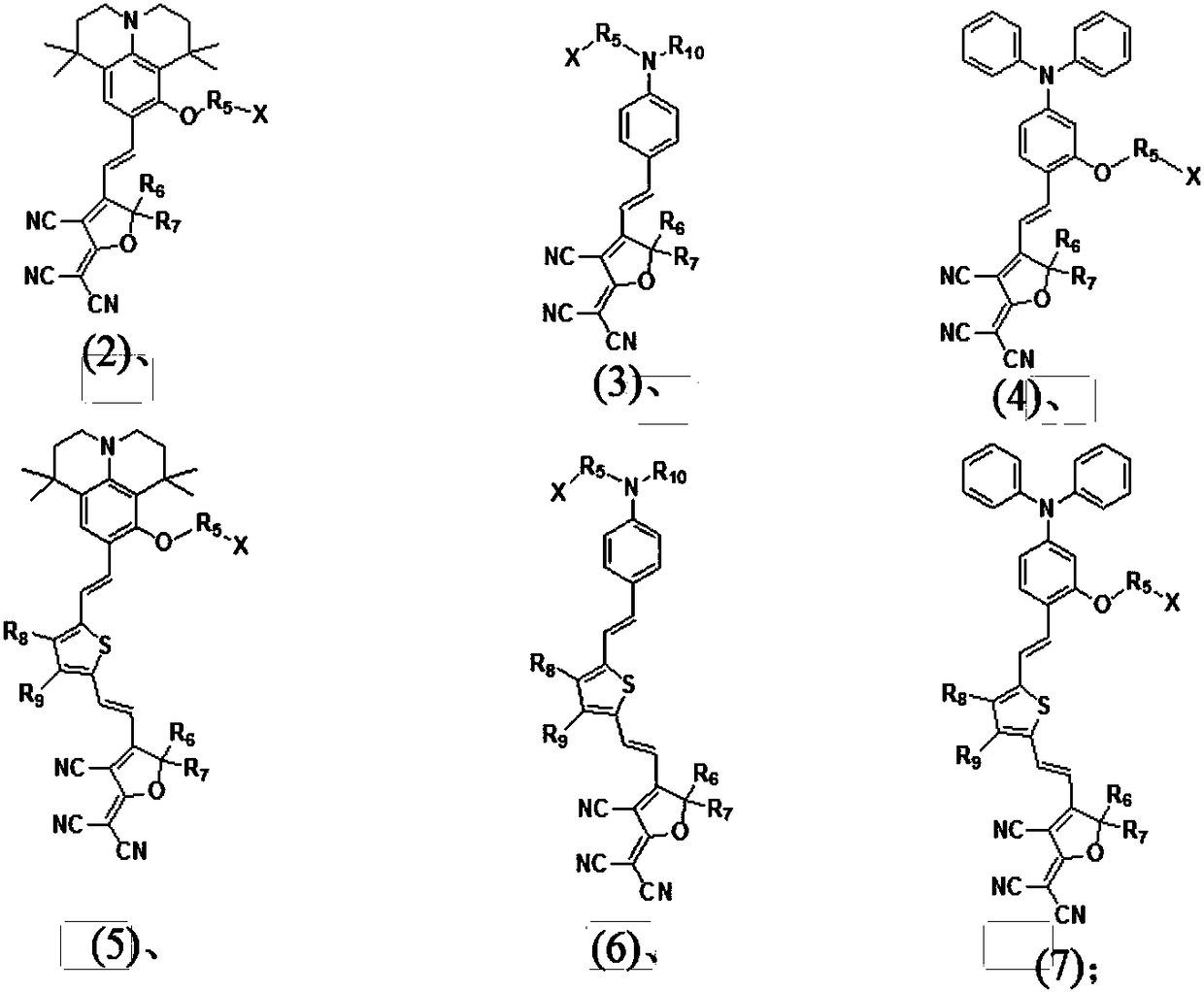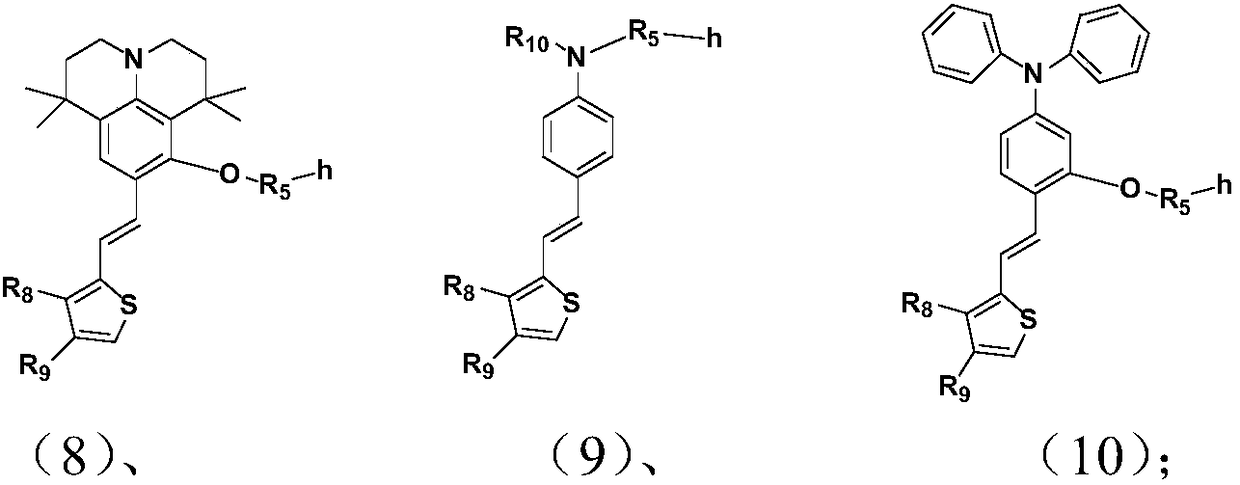Organic second-order nonlinear optical double chromophore catalyzed and prepared by using Cu(I) as well as preparation method and application thereof
A second-order nonlinear, dual chromophore technology, applied in the field of organic second-order nonlinear optical dual chromophore and its preparation, can solve the problems of inability to meet the requirements of deviceization, low efficiency, and small electro-optic coefficient
- Summary
- Abstract
- Description
- Claims
- Application Information
AI Technical Summary
Problems solved by technology
Method used
Image
Examples
Embodiment 1
[0100] A kind of preparation method of organic second-order nonlinear optical double chromophore with formula YL3
[0101]
[0102] The synthetic route is as follows:
[0103]
[0104] 1) Synthesis of compound 1
[0105] Add 10g or 36.6mmol of 8-hydroxy-1,1,7,7-tetramethyljulonidine-9-carbaldehyde, 14.2g or 91.5mmol of 1,6-dichloromethane, 10.1g or 73.2mmol of potassium carbonate, 0.02g of phase transfer catalyst 18-crown-6, and 100mL of DMF were connected to a condenser, refluxed, and TLC was used to detect the progress of the reaction. The reaction was quenched by dropping deionized water. After cooling, add 200mL saturated saline to the reaction flask, then extract the aqueous phase twice with 100mL ethyl acetate, combine the organic phase; dry the organic phase with anhydrous magnesium sulfate, filter overnight, and obtain a clear and transparent yellow organic phase solution , the solvent was removed by rotary evaporation, and column chromatography (petroleum eth...
Embodiment 2
[0133] A kind of preparation of polymer film, the method is as follows:
[0134] Add 0.075 grams of polymethyl methacrylate, that is, PMMA, into 1.00 mL of cyclopentanone, stir for 3 to 5 hours until the PMMA is completely dissolved, then add 0.025 grams of the organic second-order nonlinear optical chromophore compound synthesized in Example 1, The resulting mixed solution was coated on an ITO glass substrate by spin coating (controlling the rotation speed at 800-1200 rpm), and then dried in a vacuum oven at 60° C. for 24 hours to obtain the polymer film I. The thickness of the polarized polymer film is between 2-4 μm.
[0135] The polarization and electro-optic coefficients of the synthesized polymer films were measured:
[0136] The polymer film I obtained by the organic second-order nonlinear optical chromophore compound of Example 1 and PMMA is carried out corona polarization, and the polarization temperature is respectively 160 ℃, 165 ℃, and the polarization time is 10~...
PUM
| Property | Measurement | Unit |
|---|---|---|
| thickness | aaaaa | aaaaa |
Abstract
Description
Claims
Application Information
 Login to View More
Login to View More - R&D Engineer
- R&D Manager
- IP Professional
- Industry Leading Data Capabilities
- Powerful AI technology
- Patent DNA Extraction
Browse by: Latest US Patents, China's latest patents, Technical Efficacy Thesaurus, Application Domain, Technology Topic, Popular Technical Reports.
© 2024 PatSnap. All rights reserved.Legal|Privacy policy|Modern Slavery Act Transparency Statement|Sitemap|About US| Contact US: help@patsnap.com










